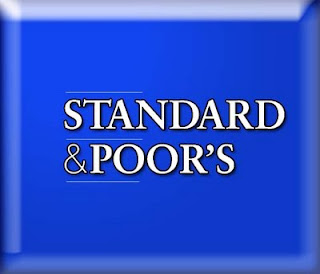Just what is a stock worth?
The obvious answer, of course, is what someone will pay for it. And that depends on a host of factors, including the company’s business prospects, the appetite investors have for risk, regulatory challenges and the possibility of big change at the company. Pricing stocks is a gamble with as many variables as a roulette wheel.
So it’s amusing when a self-interested investor group pegs a value for a stock, insisting that’s what it should fetch if only company managers do what the group wants them to do. Just such a group has done this now with the McGraw-Hill Cos., my hard-pressed former employer. Some will laugh while others, including shareholders such as myself, surely hope the group is close to right.
Jana Partners and the Ontario Teachers’ Pension Plan, which recently bought up some 5.2% of MHP’s stock, say the outfit is worth $65 a share. But it will take a breakup to unlock that value and lift the stock out of its mire at around $40, the JOT group suggests. JOT is pushing its vision on chief executive officer Terry McGraw, urging him to take a cleaver to an operation his family has run since 1888. The group, whose holdings top those of the McGraw family’s now, aims to jumpstart an ongoing internal strategic review the methodical McGraw has been undertaking.
JOT offers an elaborate argument to arrive at its $65 valuation. Its presentation, replete with Power Point slides filed with the SEC, includes graphs like that above that spell out in precise detail what the value of the stock would be if such elements as the conglomerate discount and the cost of management overhead were factored out. The bar on the right represents the $65 mark; the one on the left, a depressed recent price. It’s all very tidy and scientific.
Of course, it’s all wishful thinking, despite the veneer of sophistication and precise calculation. JOT, for instance, figures that investors knock $11 off the share price just because the company is a conglomerate. It pegs the cost of the corporate cost structure at $6 a share. Once those millstones disappear — poof! — the stock rises, right?. And it says a buyback of stock, together with enhanced profit margins equaling those of peers, would push up share value another $7.50. Voila, $65.
Despite the numbers, there’s really nothing new about JOT’s thinking. The view that McGraw-Hill is worth more in pieces than as a single, un-synergistic, unit is as old as the company’s diversification. Critics have long carped that Standard & Poor’s has nothing in common with the textbook division. Even within a single division, the information and media services unit, there has been little synergy: before BusinessWeek was sold in 2009 and became Bloomberg Businessweek, it had nothing in common with a group of TV stations MHP put on the market some months ago. As long ago as July 2010, I rooted for a deal of some sort myself to sort out MHP’s challenges.
The difference now, though, is the environment. S&P has been set back on its heels by a Justice Department probe of its Pollyanna ratings — terribly flawed in hindsight — of mortgage securities prior to the housing crash. News of this investigation broke just after S&P downgraded U.S. Treasury debt to AA+, an unpopular move that has riled Congressional critics. Furthermore, recently enacted law, if not changed, will strip away requirements that securities carry ratings by S&P and its competitors. No wonder the stock plunged to about $35 in early August and rival Fitch Ratings downgraded MHP’s debt a notch to A. It all threatens S&P, which is why the outfit has brought in a fix-it man from Citigroup, Douglas Peterson, to take charge.
Then, on the textbook side, hard-pressed states aren’t buying many books for students these days. And the Net is making pricey hardbacks look antediluvian, oh so pre-Kindle. Kids will always need learnin’ but they might not need to pay so much for it, at least not to textbook companies. This is an existential challenge to the company.
All these pressures, I’m sure, have pinned MHP’s shares to the floor. Oh, don’t we all pine for the days when the stock rocketed to $71, back in mid-2007. Why would it ever be worth less? Why only $65 post-breakup now? Those Canadian teachers and their buds at Jana have talked up the value a bit, adding $5 a share so far with their lushly detailed charts and sharp calculations. Thorough coverage by the Wall Street Journal has helped, too.
But the real value of McGraw-Hill won’t be set by chalk-wielding Ontario-dwellers or hedge fund speculators. The market will rule. I’m sure hoping it rules well. Anybody think MHP is worth $100 a share to some savvy buyer? Do I hear $125?






